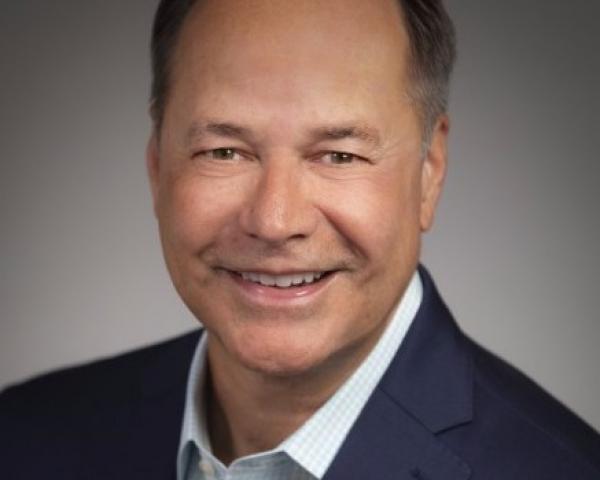This is the second in a planned series following our initial article, Barriers to Insurance Innovation.... and New Year’s Resolutions to Overcome Them, which was published in January as a blog on InsurTech Consulting and by Insurance Thought Leadership as 2022 Resolutions to Foster Innovation. In that article, we identified the differences and commonalities among carriers and insurtechs. This series will feature practical, experience-based perspectives and insights from successful leaders who have had careers in either or both of the insurance and insurtech sectors.
This particular article is based on our recent interview with Pete Frey, associate vice president, commercial lines, emerging capabilities and competitive intelligence at Nationwide. Pete is the perfect leadoff interview because of his deep experience on multiple sides of insurance innovation and technology. Pete perceives many critical gaps in empathy and understanding between insurer and insurtech organizations and shares his ideas on how to narrow or close those gaps to overcome some of the barriers to innovation.
Pete’s career has included 14 years with American Family in agent technologies and emerging usage-based insurance, time with insurtechs Zubie and Hubio in connected car telematics and UBI product leadership roles and for the past four years with Nationwide leading commercial lines telematics and related emerging technology product strategies.
Q: What has changed with insurtech/carrier adoption over the past two years?
Pete Frey: Carrier and vendor partner interaction requires a different dynamic these days. The pace of things, the increased dependence on insurtechs and the competitive landscape in insurance has led to some different expectations when it comes to that dynamic, and how partnerships are now a strategic necessity.
Insurtechs are doing a better job of building teams that include insurance industry experience and acumen, and that goes a long way toward understanding insurers' pain points to solve. Likewise, the role of the insurance CVC [corporate venture capital] unit has expanded and is helping insurers drive the CVC mindset deeper into the organization
Innovation, in general, has to be a core strategy, but the approach to it must also change, and it must be viewed with a bit of a different lens. When times are challenging for insurers, innovation is usually the first thing to go due to bigger priorities or limited budgets and resources. Carriers may not be able to afford to focus as much as they’d like on innovation during those times.
To stay relevant, however, they have to find ways to keep innovative pursuits going and part of their portfolio. Easier said than done, however!
See also: Key Considerations for Managing Innovation
There is general recognition that the dynamics between insurers and insurtechs needs to change. The former vendor-customer relationship paradigm no longer works well enough. There is a real need to better understand each other’s problems and challenges at a granular level in order to forge practical, effective partnership relationships.
- Levels of expectations on both sides need to be better aligned; insurtechs prefer to move quickly; carriers recognize the need to move quickly but are not always able to
- Insurer innovation leaders need broad organizational support, persuading and lobbying their peers to think and act more innovatively; innovation requires an enterprise-wide effort
- Insurtechs should recognize that insurers are also resource-constrained (in spite of their bigger balance sheets) and that funding for innovation competes with many other corporate priorities
Pete describes the “flywheel method” of making incremental but increasing progress as a minimum starting point vs. over-thinking concepts with no progress. He also shares that insurtech readiness to launch a trial or pilot requires some patience and preparation along with understanding insurers' pain point priorities. A telltale sign can follow a demo session where the insurtech explains its capabilities in great detail and ends by asking, “How do you think we can help you?” This can be a red flag while shifting the next steps onto the insurance company, which is already juggling projects and priorities.
Q: How can insurance carrier innovation be a sustained effort with so many distractions and competing priorities that emerge each year?
Pete Frey: Vocal and visible support from the C-suite is more critical than ever. Innovation is about a lot more than just chasing “shiny objects”; the industry must shift toward “sustainable innovation” that has a much deeper connection to the company’s business strategy. And it needs to be aligned and in cooperation with all business units; distribution, underwriting, services, claims, marketing and finance. Here, Pete referenced a favorite quote he attributed to Amazon founder Jeff Bezos; “Be stubborn on vision but flexible on details.”
Proof of concept (POC) projects need to have clearly articulated objectives stated and agreed on up front by all parties.
Innovation doesn’t always have to be about spending money. Innovators at insurers and insurtechs need to be more resourceful, connecting and applying good ideas and learnings from others. Innovation requires more lateral thinking and fewer blinders, especially when applying various learnings within the enterprise.
Innovation leaders need to be evangelists and ensure continuous alignment with the business by demonstrating and explaining how practical approaches can be just as innovative as well as productive.
Q: How do you distinguish between advancing new capabilities from simply launching technology?
Pete Frey: Telematics (and other types of Internet of Things (IoT) need to be seen as building new capabilities rather than just rolling out a new technology. This is becoming even more true as these technologies begin to pervade our space at a more rapid pace and at a broader scope across the entire value chain. For example, telematics success involves all functions coming together and doing their part, from distribution and sign-up, to services and claims handling to surrounding the product and customer experience alike.
Q: What can startups and insurtechs do better to partner and position carriers to say "yes”?
Pete Frey: Insurtechs should be prepared to understand and align carrier use cases at a deeper level.
They should include strong carrier experience in their leadership and functional teams and consider forming an advisory board. Customer and expert advisory boards of some sort would also be beneficial. A platform for two-way feedback is very valuable.
And finally, insurtechs need to be better listeners in every sense of the word; he encourages attendance and participation in industry conferences, attendance at webinars and investing time in reading industry journals.
Q: What can carriers do to support and guide insurtechs in today’s environment?
Pete Frey: In POC situations, insurtechs and carriers need to agree in advance on what success will look like and how it will be measured.
Insurtechs should expect and be prepared for a trial period, possibly without revenue, although in some circumstances carriers will agree to reimburse the insurtech for a pre-agreed amount of costs in the event that success metrics are met.
Carriers need to plan better so that, when POCs are completed and successful, carriers are able to begin to deploy the solution without having to “park” the project for an extended period. So, measuring KPIs and agent, customer and user experience matters, as well.
Again, carriers need to become more creative in innovating and piloting effectively in ways that do not always require funding. With finite resources and competing priorities, carriers will need to be more creative in leveraging insurtech resources, whether it’s low-fidelity test-and-learn efforts, low- to no-cost POCs or cost-sharing collaborative efforts across multiple partners and carriers to help accelerate innovative capabilities.
See also: How to Embrace Insurtech Culture
Q: What’s on your 2022 insurtech wish list?
Pete Frey: With a focus on the small to mid-size commercial market, Pete identified a need for more efficient underwriting solutions using technology that integrates third-party data and an easier process for independent agents to write and submit new business. This should include the elimination of time-consuming “busy work” on submissions to carriers, including a wide variety of file format variations and missing data. Today, there is much administrative work, missing or incorrect information and a lot of back and forth between agents and underwriters to tackle, for starters.
We wish to thank Pete Frey for his time, insights and candor and hope you find this information as interesting and valuable as we did. What we took away from this interview at a high level is that insurtechs and carriers both need to take the time and make the effort to understand one another’s needs, capabilities, constraints and strategic objectives to collaborate and achieve true innovation together, as partners rather than in the traditional vendor/ customer relationship.
Watch for the next article in this series and feel free to write us with any comments and suggestions about interviews you would most like to see.









